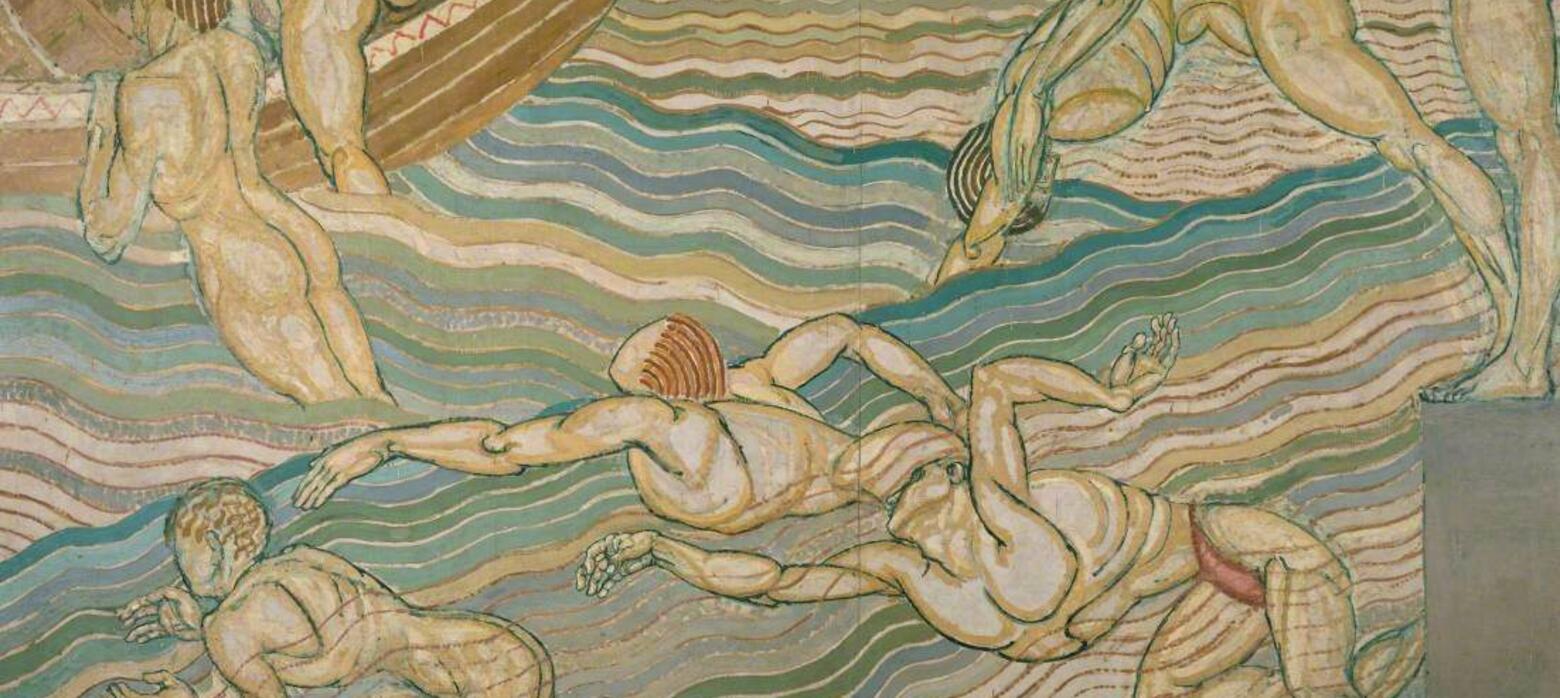Celebrating Queer Creativity: Grant, Hudson and Sands
Pride Month, which takes place in June, celebrates the contributions of the LGBTQIA+ community to the wider world.
To commemorate Pride 2025 we have delved into the archives of the Federation of British Artists, to explore some trailblazers from previous exhibitions. Throughout the month we have been sharing stories from talented artists who have had a relationship with the FBA.
While we are celebrating their artistic skill and contribution to the history of art, we are also highlighting these artists for their powerful resonance with today's LGBTQIA+ communities.
In light of Pride in London taking place this Saturday 5 July, enjoy the final article of our series, featuring Duncan Grant, Anna Hope Hudson and Ethel Sands.
Duncan Grant (1885-1978)
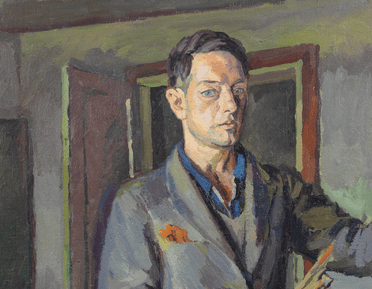
Duncan Grant was a Scottish painter and member of the Bloomsbury Group, the Camden Town Group and the New English Art Club. Grant exhibited many times with the NEAC from 1909 to 1925, and was commemorated in the Club's Centenary Exhibition in 1986.
Image (1): Bonhams.
A Post-Impressionist painter, Grant was inspired by contemporary European artists such as Van Gogh and Cézanne, after Roger Fry introduced him to their work. He quickly rose to prominence in the UK after exhibiting with the NEAC for several years. Soon he was asked to contribute to major projects such as artwork for the RMS Queen Mary and Lincoln Cathedral.
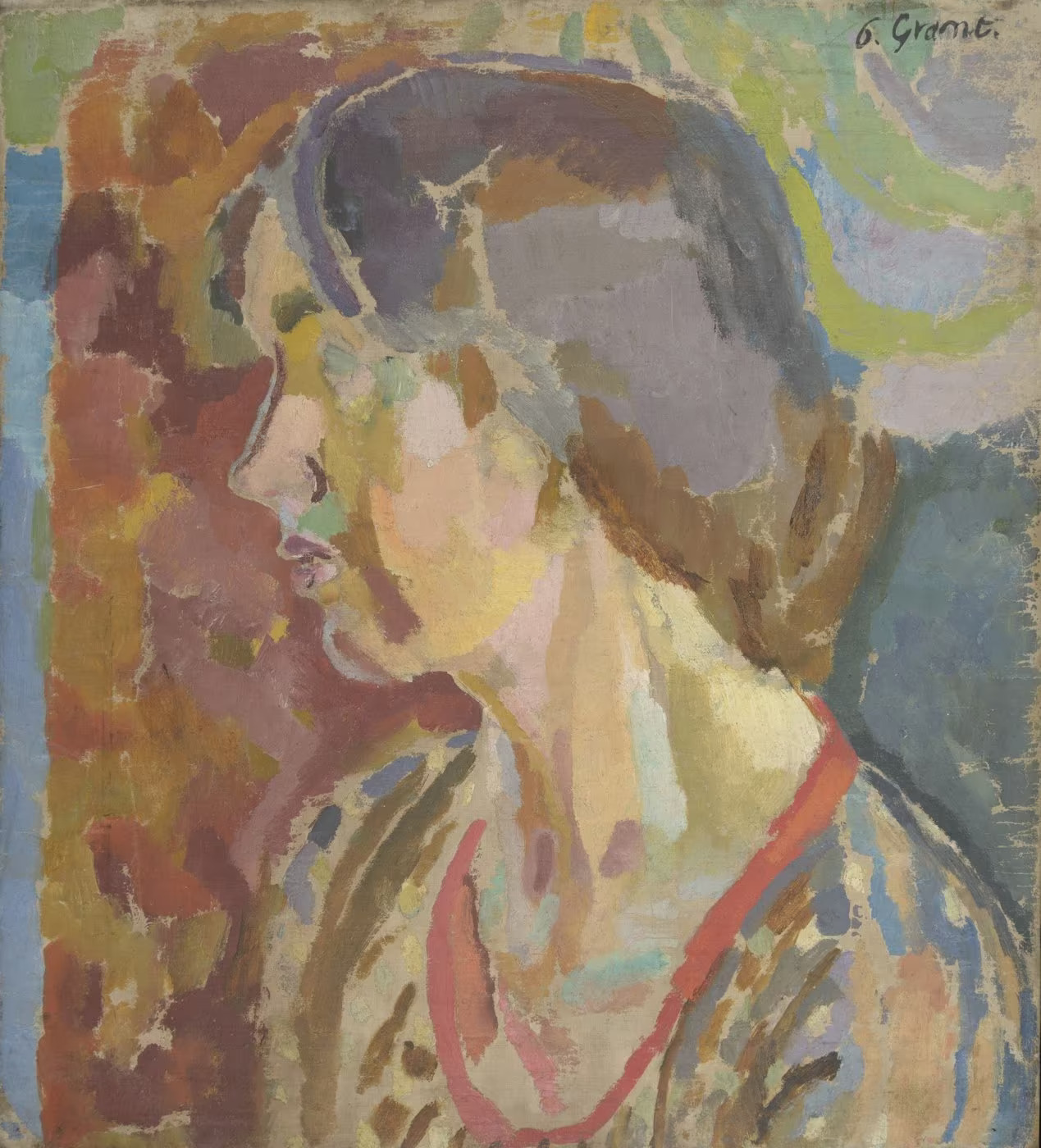
Duncan Grant famously lived with Vanessa Bell, whom he painted above (2), at Charleston. Their creative partnership and lifelong friendship led them to the Bloomsbury Group, alongside other famous creatives such as Virginia Woolf and Lytton Strachey. The Bloomsbury Group was a circle of artists, writers and intellectuals credited with making a huge impact on art, history and culture in Britain. Charleston became the country home of the Bloomsbury Group and together Bell and Grant decorated the interiors of their house, with playfully painted surfaces and furniture embodying the spirit of Post-Impressionism.
The writer Lytton Strachey was Grant’s cousin and they were also lovers for a time. He had studied at Cambridge with other members of the Bloomsbury group such as Clive Bell and Thoby Stephen, Vanessa Bell's brother. It was through him that Grant was introduced to the group.
During his time at Charleston, Grant's relationship with Bell was mainly creative, with the artists often painting in the same studio and offering critique, though the pair did have a daughter together. As a fellow artist, Vanessa Bell admired Grant’s painting skills and, in a letter from 1912, she described him as ‘the long looked for British genius' (3). This powerful creative friendship continued throughout their lives, and the artists are buried together in Sussex.
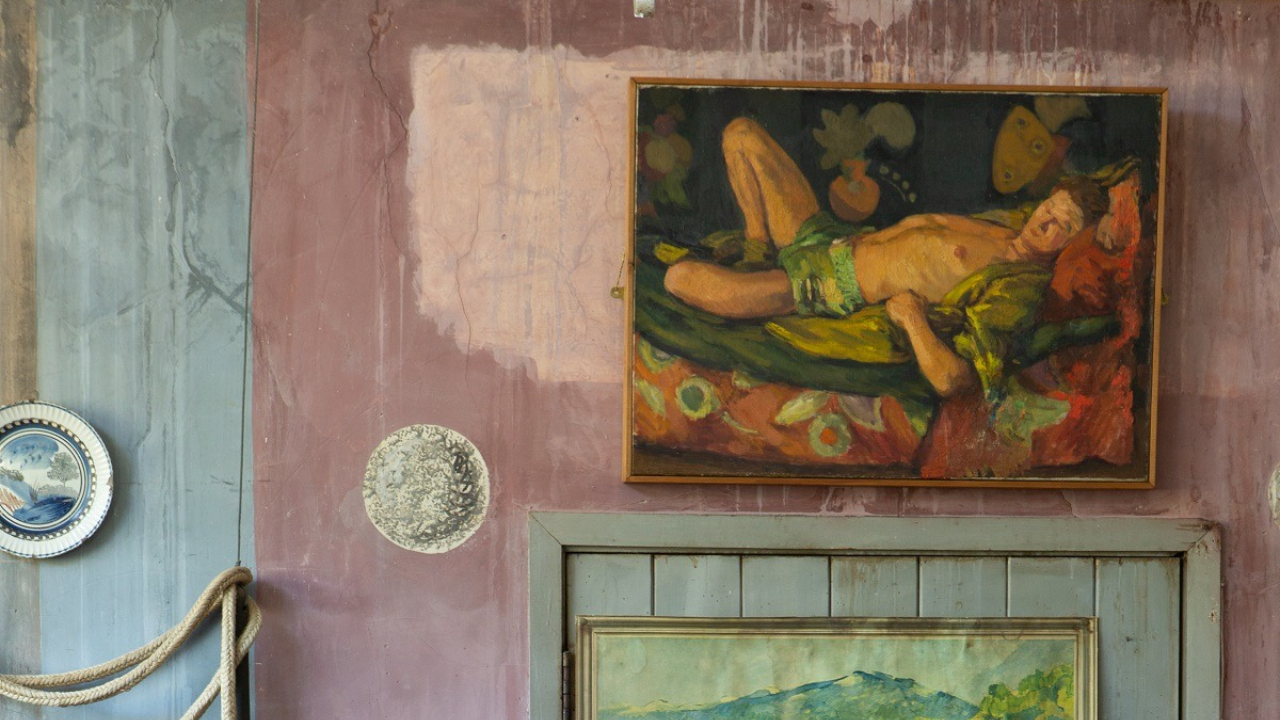
Grant was born the same year as The Labouchere Amendment was passed by Parliament, criminalising all sex between men regardless of consent. The law wasn’t revisited again until 1967, by which time Grant was in his 80s. For the greater part of his lifetime, a fundamental part of his identity remained illegal and exposed him to prosecution. Nevertheless Grant had a number of relationships with men throughout his life, including the artist Stephen Tomlin, the economist John Maynard Keynes, and Adrian Stephen, Vanessa Bell’s brother (4).
In Grant's later years, his lover the poet Paul Roche took care of him, eventually becoming co-heir of Grant's estate. The image above (5) shows a painting by Grant of Roche on the wall of Charleston. Grant passed away at Roche's home in 1978. John Russell concluded his obituary in the New York Times with the statement: 'He preserved into extreme old age the vivacity, the breadth of interest and the immediacy of human contact that in earlier years had made him irresistible to men and women alike.' (6)
Duncan Grant will be remembered for his incredible contributions to British art and interior design, alongside the bravery and openness in how he lived his life. This is immortalised in Charleston House, a legacy that can still be explored to this day.
Anna Hope Hudson (1869-1957) and Ethel Sands (1873-1962)
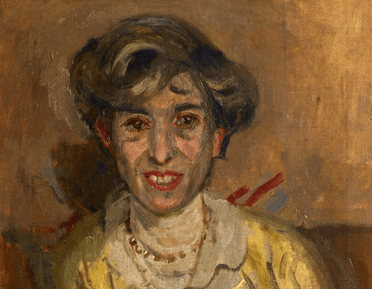
Painters and partners, Ethel Sands and Anna Hope Hudson (also known as ‘Nan’) were two early twentieth-century female painters who were in a long-term lesbian relationship throughout most of their lives. Hudson exhibited nineteen works with the NEAC between 1909 and 1933, versus Sands’ three in 1922 and 1923.
Image (7): © Estate of Walter R. Sickert.
The pair met in Paris in 1897 whilst studying under Symbolist painter Eugene Carrière and they quickly became close companions despite their differences. Sands felt very connected to England and enjoyed socialising, whereas Hudson was more reserved and preferred to be in the French countryside. The pair spent most of their lives travelling between the two.
This was often reflected in their work. Whilst their painting styles are similar, perhaps due to the time spent together, Sands tended to paint soft domestic scenes whiles Hudson painted dark landscapes.
Despite their talent, the two artists were often restricted when it came to exhibiting in many of the male-dominated groups of the time. However they still pushed forwards, exhibiting many times with the New English Art Club and in 1912 also held a joint exhibition at the Carfax Gallery in St James's.
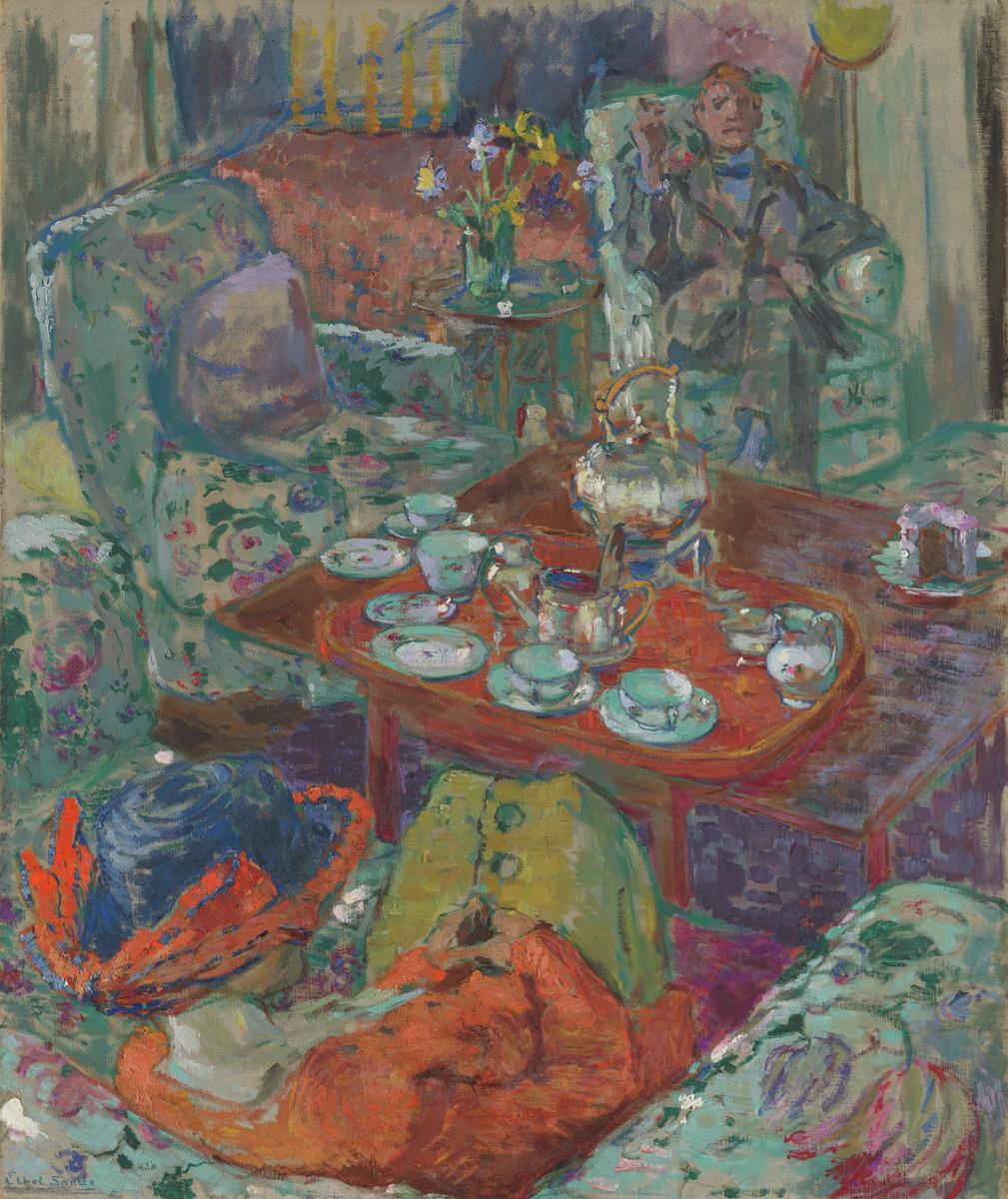
Besides painting the couple spent a lot of time with the Bloomsbury Group in London, including Duncan Grant and Vanessa Bell. They were also close with artist Walter Sickert, a founding member of the Camden Town Group and one of the earliest members of the New English Art Club.
The work pictured above (8) is ‘Tea with Sickert’ by Ethel Sands, dated c.1911-1912. The catalogue entry for the work in the Tate Collection presumes that the woman seated on the sofa is Nan Hudson, opposite the suited Sickert himself. Ten years later, Sickert painted Sands descending a staircase at Newington House in Oxfordshire, a stately home owned by the two women that became a regular meeting place for the Bloomsbury Group.
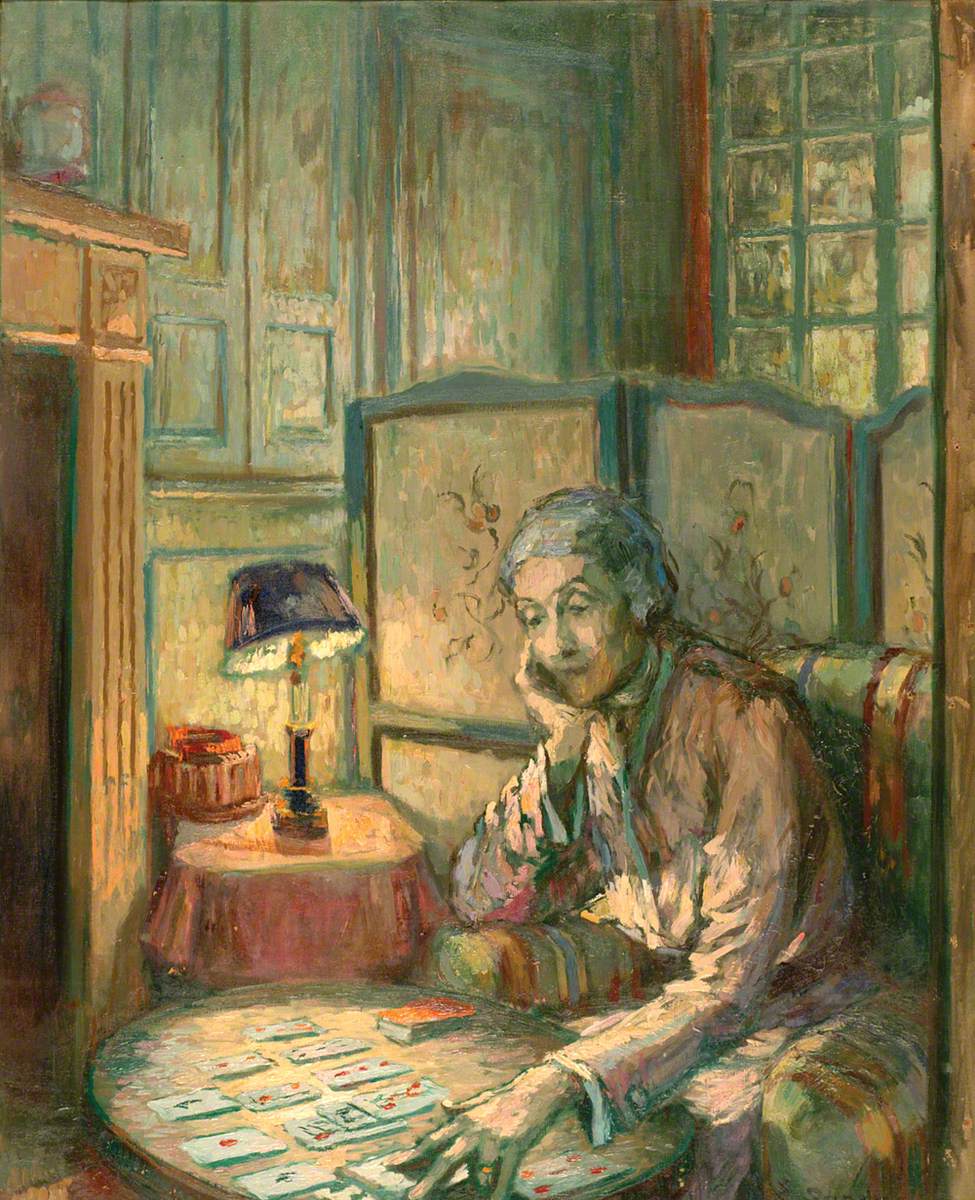
Sands and Hudson were essentially inseparable for almost sixty-five years until Hudson's death in 1957, and sadly Sands died only five years later in 1962.
Lydia Figes highlighted for ArtUK, in a piece that recognised the complementary temperaments and characters of the two, a painting by Sands of Hudson playing cards towards the end of her life (9). She concluded her article with the hope that 'the work of Sands and Hudson – and their enduring relationship – is not forgotten (10).'
Indeed, the two were incredible artists who, despite the setbacks from the art community at the time, pushed to create and exhibit beautiful works.
Federation of British Artists
The Federation of British Artists is a visual arts charity founded in 1961, made up of nine leading art societies.
References
Banner image: Bathing by Duncan Grant (1885-1978), oil painting on canvas, 228.6 x 306.1 cm, 1911. © Tate.
(1) Self-portrait by Duncan Grant (1885-1978), oil painting on canvas, 76.2 x 55.8 cm, 1925, Private Collection. Photo: Bonhams.
(2) Portrait of Vanessa Bell by Duncan Grant (1885-1978), 1916, Charleston. © The estate of Duncan Grant. Photo; Charleston.
(3,4) Charleston House, Duncan Grant 1885-1978, Charleston.
(5) Paul Roche Reclining by Duncan Grant (1885-1978), oil painting on canvas, 1945. © The estate of Duncan Grant. Photo; Lee Robbins.
(6) Russell, John (1978). Duncan Grant, Painter, Dies at 93; Founder of Bloomsbury Group. The New York Times.
(7) Portrait of Ethel Sands by Walter Richard Sickert, 1913–14. © Estate of Walter R. Sickert. Photo © Ashmolean Museum, Oxford.
(8) Tea with Sickert by Ethel Sands (1873-1962), c.1911-12, Tate, Bequeathed by Colonel Christopher Sands 2000, accessioned 2001. © The estate of Ethel Sands. Photo; Tate.
(9) Nan Hudson Playing Patience at Auppegard, France by Ethel Sands (1873-1962), oil on canvas, 64 x 52cm. © City of London Corporation.
(10) Figes, Lydia (2019). The socialite and the introvert: the shared life and art of Ethel Sands and Anna Hope Hudson. ArtUK.

